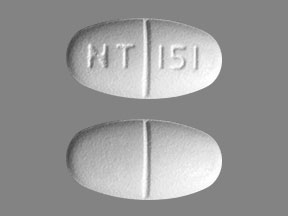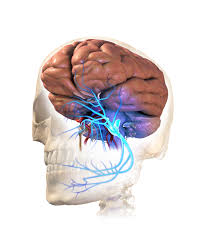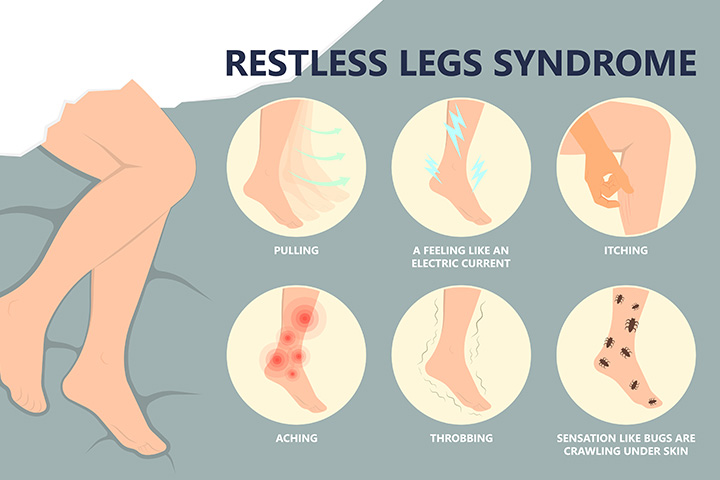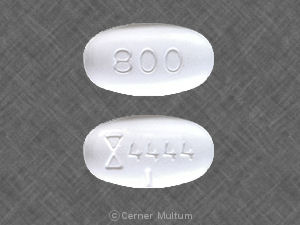Gabapentin is a prescription medication most often used to prevent seizures or treat nerve pain.
While it is not clear exactly how gabapentin works, it appears to slow signals between the brain and body. In addition to being used for seizures and nerve pain, gabapentin also has many potential off-label — or non-FDA-approved — uses, including:
- Alcohol withdrawal
- Cough
- Fibromyalgia
- Hiccups
- Pruritus
- Restless legs syndrome
- Social anxiety disorder

Gabapentin is not a controlled medication under the Controlled Substances Act, but some U.S. states have begun treating it as such due to increasing misuse and abuse.

Gabapentin Dosage
Gabapentin is often titrated to effect and, as a result, doses can vary from person to person and can change over time. Most commonly prescribed as capsules or tablets, examples of available dosages include:
- 100mg
- 300mg
- 400mg
- 600mg
- 800mg
Gabapentin is also available as a liquid, often used in children to prevent seizures.

Gabapentin Dosage for Nerve Pain
The exact way that gabapentin helps with nerve pain is not known, but it may change the way the body senses and reacts to pain. For neuralgia or nerve pain, gabapentin is often started at 300 mg daily and increased by 300 mg per day until pain relief is achieved. Some studies show doses of 1200 mg or more per day is effective for nerve pain.
The dosage of gabapentin for nerve pain can vary depending on factors such as the severity of the pain, individual response to the medication, and any other medical conditions a person may have. It’s crucial to follow the dosage instructions provided by your healthcare provider or as indicated on the medication label. However, a typical dosing guideline for gabapentin in the treatment of nerve pain is as follows:
For adults:
- The initial dose is usually between 300 mg to 600 mg taken orally three times a day.
- The dosage may be increased gradually based on individual response and tolerability, typically up to a maximum of 3600 mg per day, divided into three doses.
For elderly individuals or those with impaired renal function, lower starting doses and slower titration may be necessary to avoid side effects.
It’s important to take gabapentin exactly as prescribed by your doctor and not to exceed the recommended dosage. Abruptly stopping gabapentin can lead to withdrawal symptoms or a rebound increase in pain, so it’s essential to follow your doctor’s instructions for discontinuing the medication if needed.
Always consult with your healthcare provider before starting or adjusting the dosage of gabapentin or any other medication, as they can provide personalized recommendations based on your specific medical history and condition.
Gabapentin Dosage for Anxiety
Used in combination with other medications, gabapentin is sometimes helpful for anxiety. While there is limited information for this use, there are some examples where it has been helpful. In one instance, doses of at least 900 mg per day were shown to be helpful in a patient with Generalized Anxiety Disorder (GAD) whereas severe symptoms of anxiety returned at doses less than 600 mg per day.
Gabapentin is not typically considered a first-line treatment for anxiety disorders, but it may be prescribed off-label in some cases where other medications have not been effective or are not suitable due to side effects. The dosage of gabapentin for anxiety can vary depending on individual factors such as the severity of symptoms, response to treatment, and presence of other medical conditions.
When prescribed for anxiety, gabapentin dosages are often lower compared to those used for conditions like epilepsy or nerve pain. A common starting dosage for anxiety may be around 100 to 300 milligrams taken orally two to three times per day. However, dosages can be adjusted based on the individual’s response and tolerability, typically up to a maximum of 3600 milligrams per day divided into multiple doses.
It’s important to note that using gabapentin for anxiety is considered off-label, meaning it hasn’t been specifically approved by regulatory authorities for this purpose. Before starting or adjusting the dosage of gabapentin for anxiety, it’s essential to consult with a healthcare provider who can provide guidance tailored to your specific needs and monitor for any potential side effects or interactions with other medications. Additionally, other treatments for anxiety, such as therapy or other medications like selective serotonin reuptake inhibitors (SSRIs) or benzodiazepines, may be considered depending on the individual’s situation.
Gabapentin Dosage for Seizures
Gabapentin seems to slow signaling between the brain and the body, but its exact mechanism for preventing seizures is not known. Typically, gabapentin is started at 300 mg three times per day for this use and slowly increases. Over the long term, doses totaling up to 2400 mg per day have been well tolerated. For short periods, as much as 3600 mg divided throughout the day has been used.

The dosage of gabapentin for seizures varies depending on factors such as the type of seizures being treated, the individual’s age and weight, and their response to the medication. It’s crucial to follow the specific dosage instructions provided by a healthcare professional, as they will tailor the dosage to each person’s needs. However, here are general guidelines for gabapentin dosages in the treatment of seizures:
For adults:
- The typical starting dose for adults is usually between 300 mg to 900 mg taken orally three times a day.
- The dosage may be increased gradually based on response and tolerability, typically up to a maximum of 3600 mg per day, divided into three doses.
For children:
- The starting dose for children is typically based on weight and is usually 10 to 15 mg/kg/day, divided into three doses.
- The dosage may be increased gradually based on response and tolerability, with a maximum dosage usually not exceeding 40 mg/kg/day.
Elderly individuals or those with impaired renal function may require lower starting doses and slower titration to minimize the risk of side effects.
It’s important to take gabapentin exactly as prescribed by a doctor and not to exceed the recommended dosage. Abruptly stopping gabapentin can lead to an increase in seizures or withdrawal symptoms, so it’s essential to follow the doctor’s instructions for discontinuing the medication if needed.
Gabapentin Dosage for Restless Leg Syndrome
Similar to the way gabapentin may be helpful in preventing seizures by slowing signals between the brain and the body, gabapentin may also be helpful for Restless Leg Syndrome (RLS). For RLS, gabapentin enacarbil 600mg, under the brand name Horizant, is taken each evening and can be slowly increased to effect.
The dosage of gabapentin for restless legs syndrome (RLS) can vary depending on individual factors such as the severity of symptoms and response to treatment. Typically, gabapentin is used off-label for RLS, meaning it hasn’t been specifically approved by regulatory authorities for this condition, but it may be prescribed by healthcare providers based on their clinical judgment.
For the treatment of RLS, a common starting dosage of gabapentin is around 300 to 600 milligrams taken orally in the evening, about 1 to 2 hours before bedtime. This dose may be adjusted based on individual response and tolerability. Some individuals may require higher doses, up to 1800 milligrams per day, but doses exceeding 600 milligrams per day should be divided into multiple doses throughout the day to minimize side effects.
As with any medication, it’s essential to follow the dosage instructions provided by a healthcare professional and not to exceed the recommended dosage. Abruptly stopping gabapentin can lead to withdrawal symptoms or a worsening of RLS symptoms, so it’s important to follow the doctor’s instructions for discontinuing the medication if needed.
It’s important to note that the use of gabapentin for RLS is off-label, and healthcare providers may consider other treatment options depending on individual circumstances. Always consult with a healthcare provider for personalized dosage recommendations and to discuss any concerns or questions regarding gabapentin or other RLS treatments.
